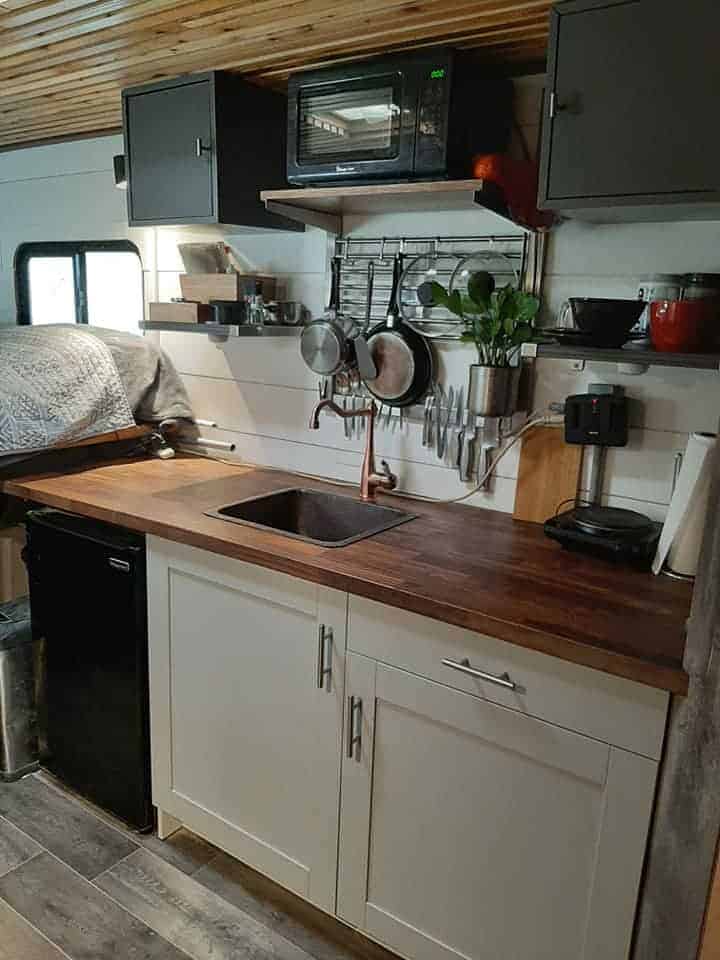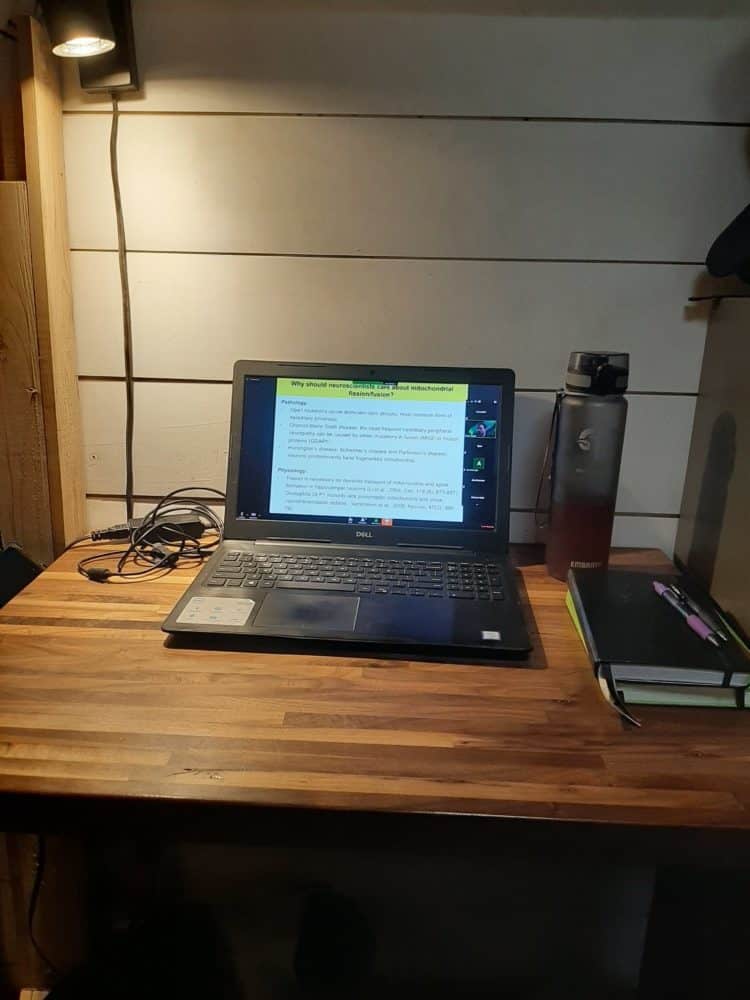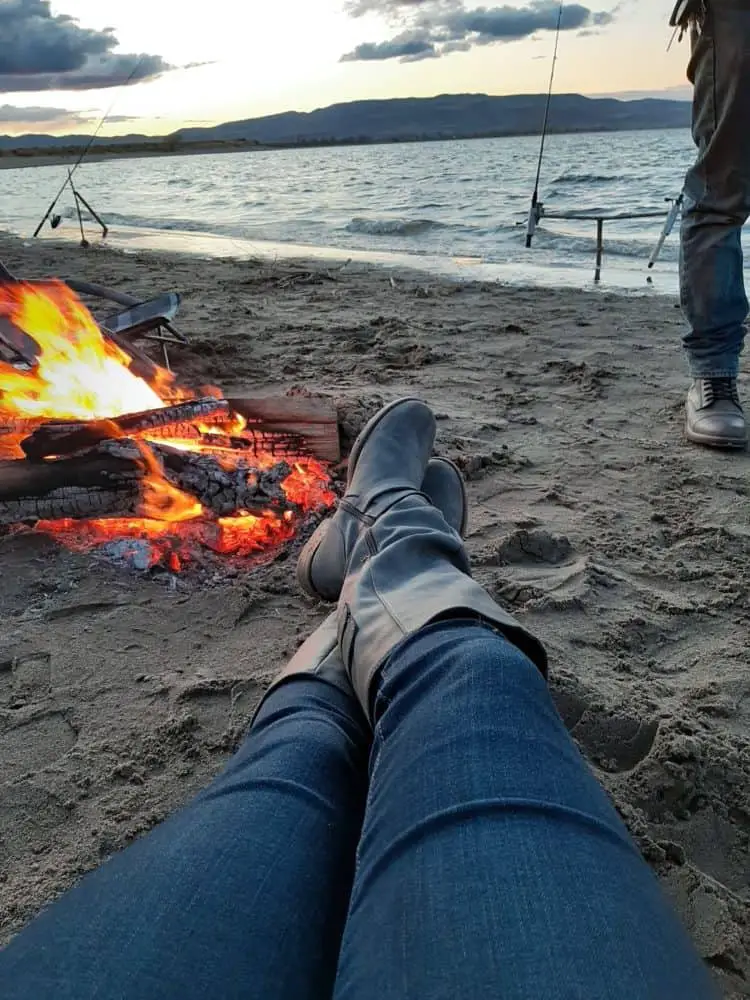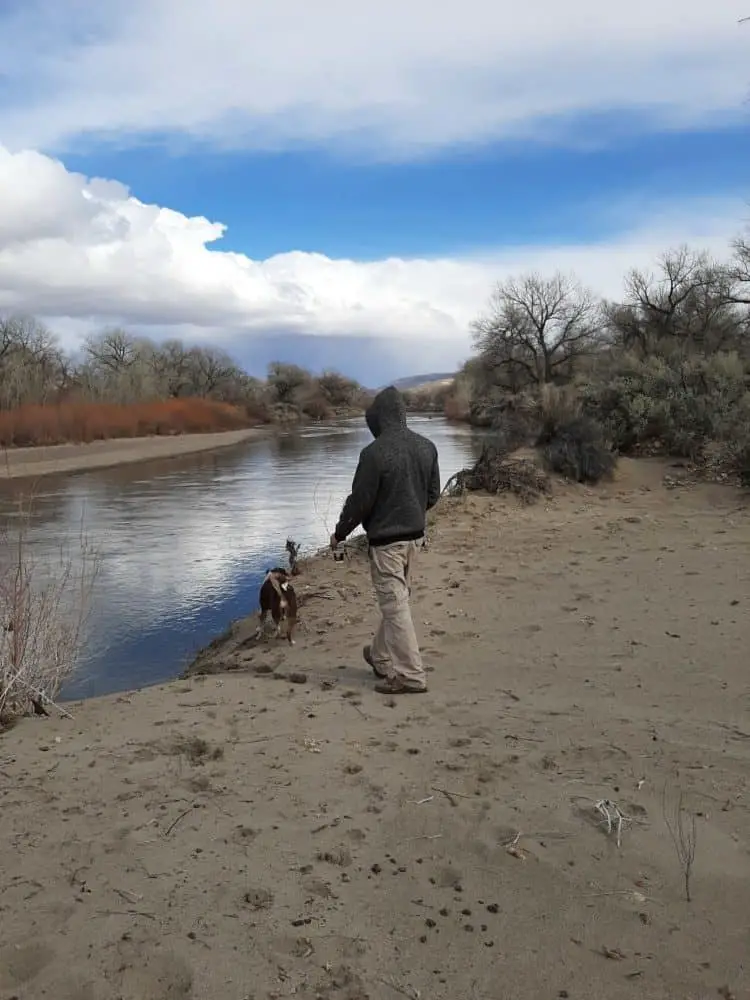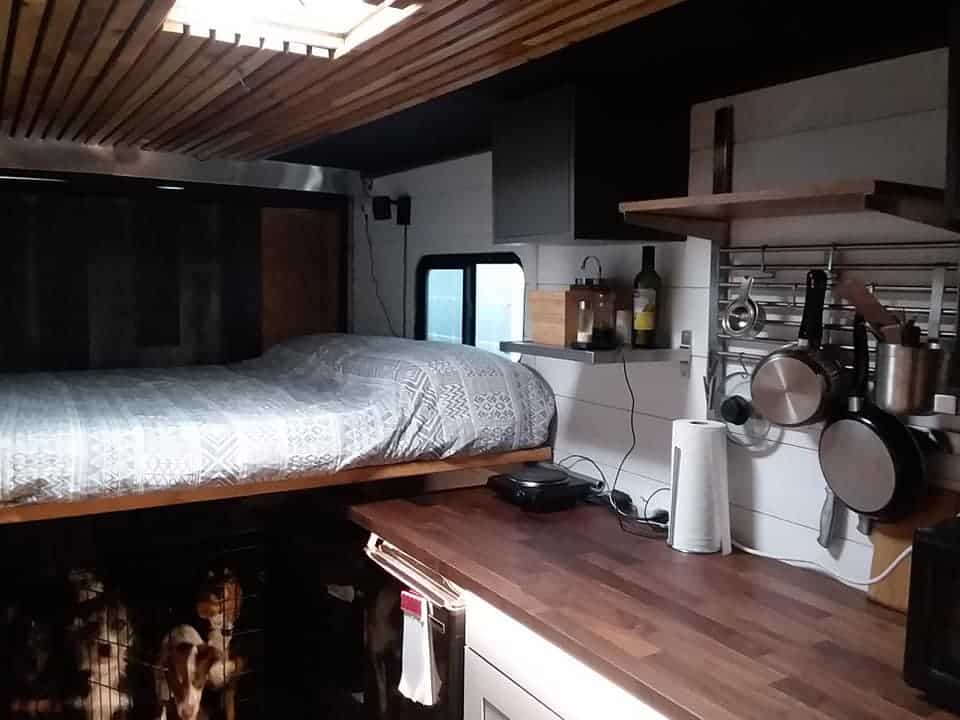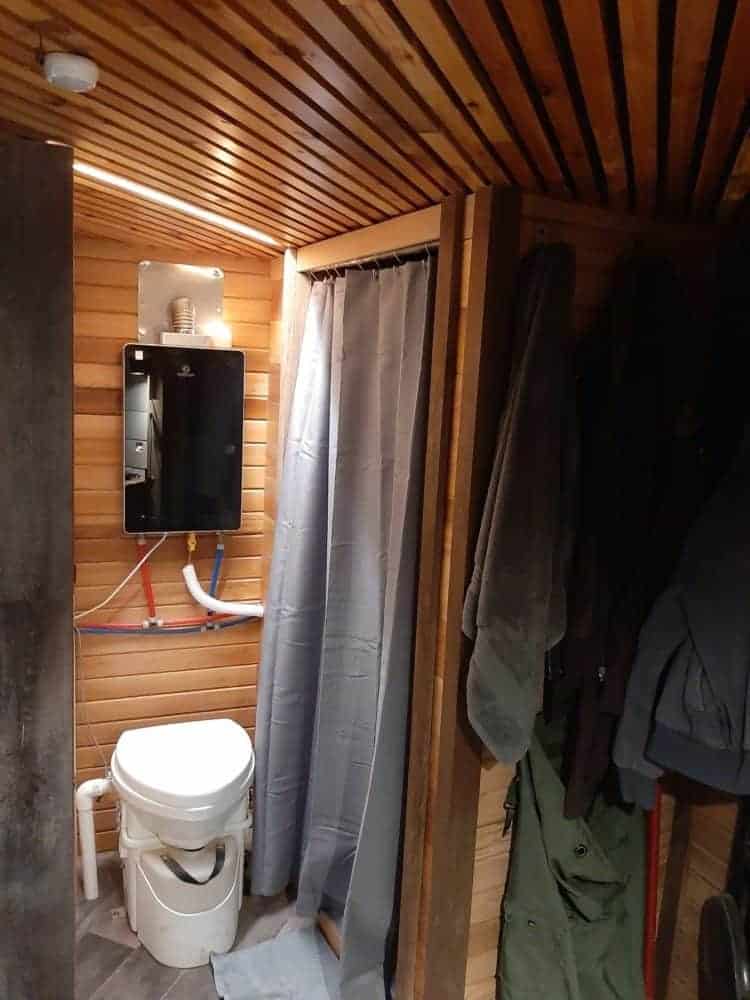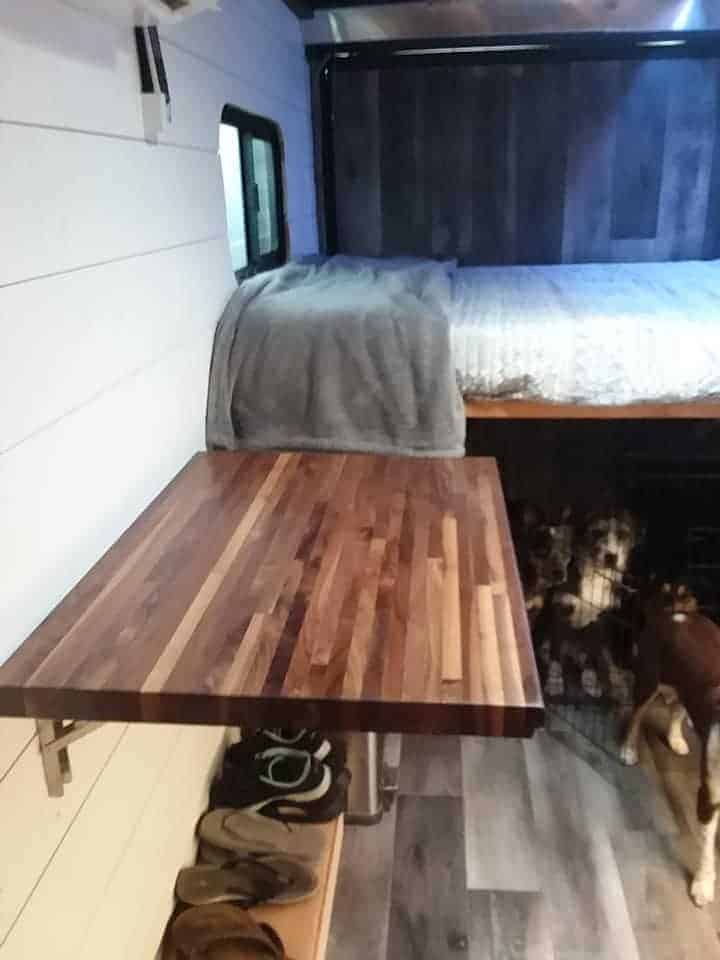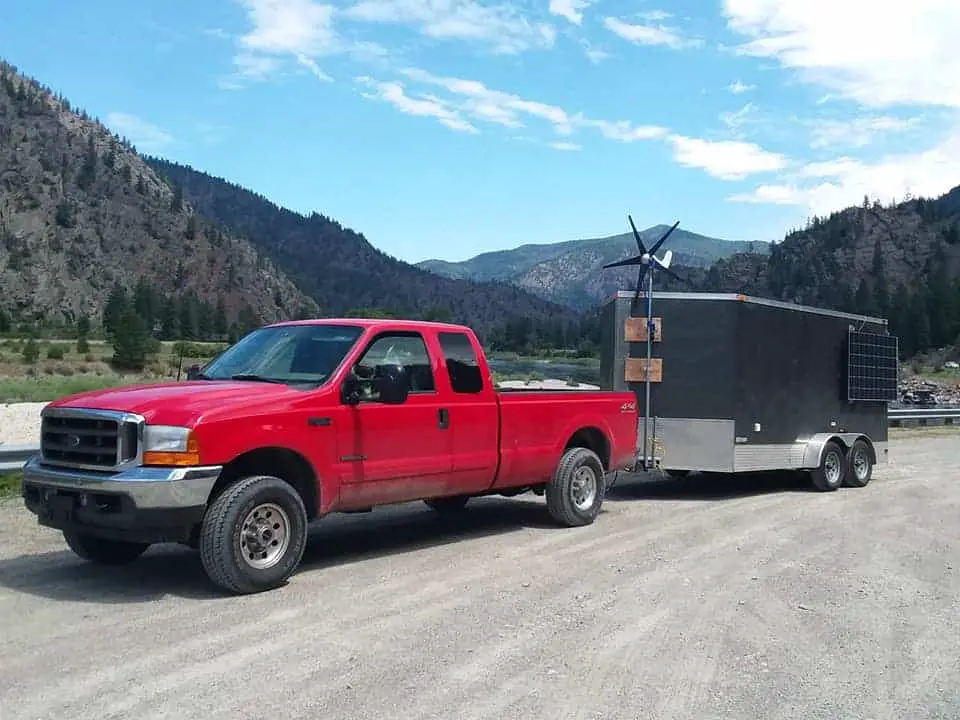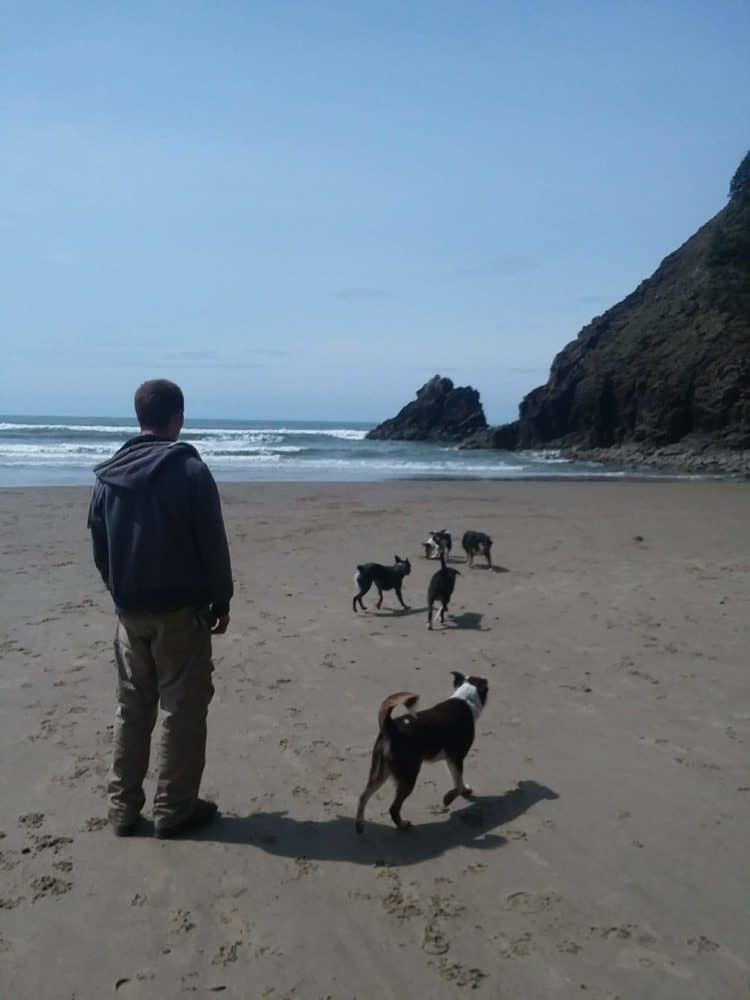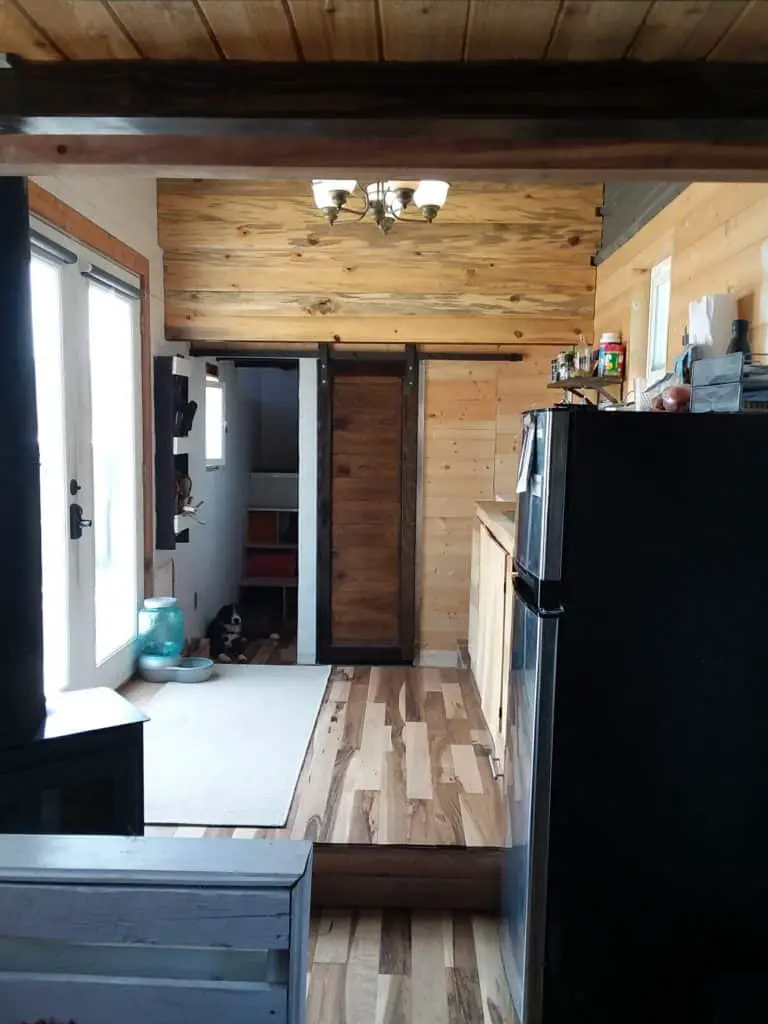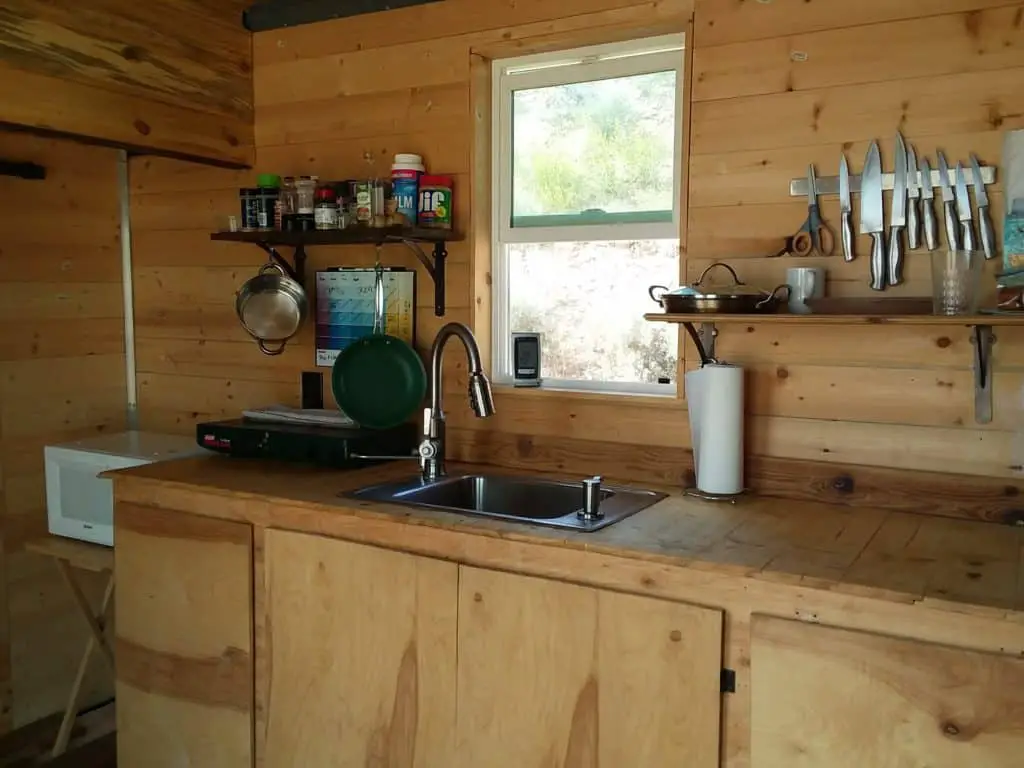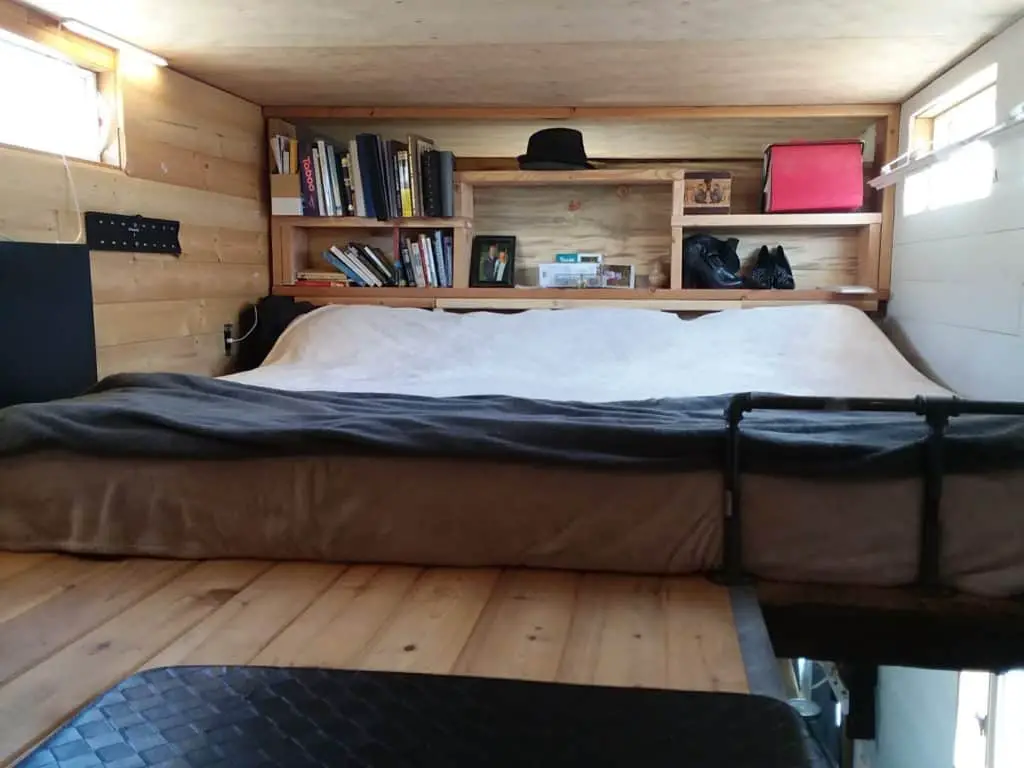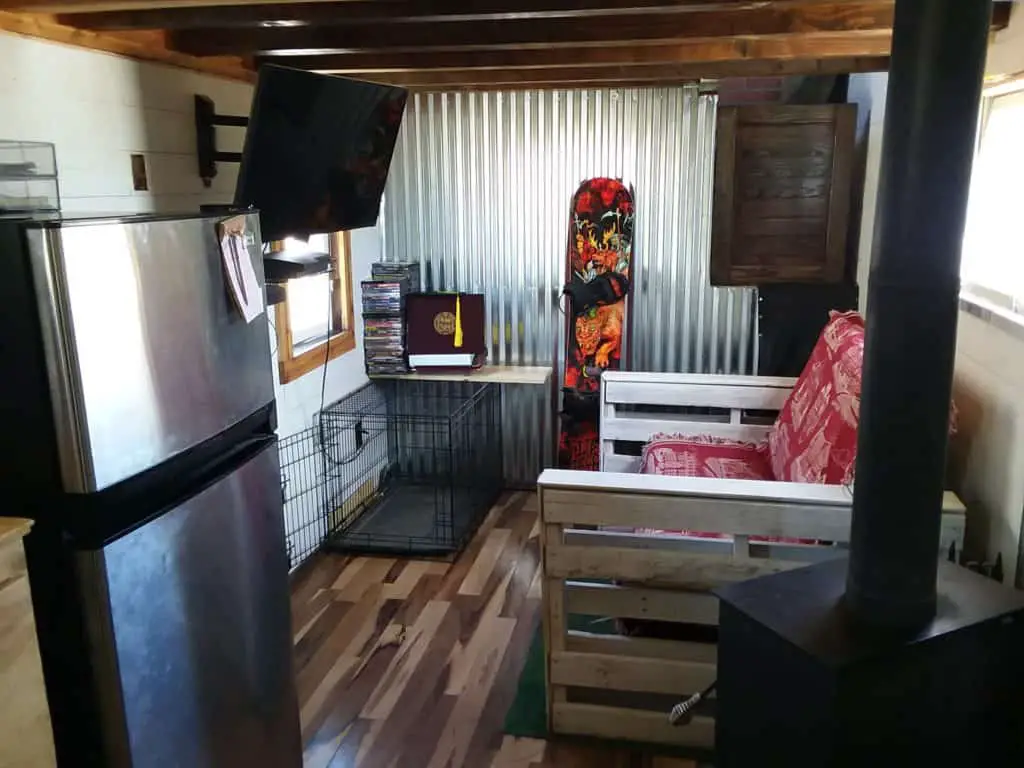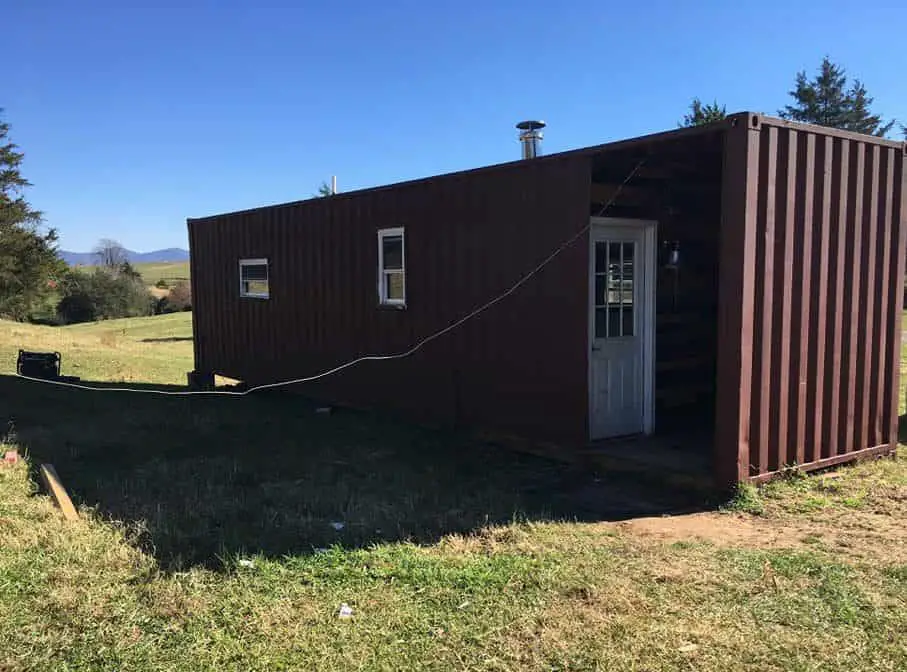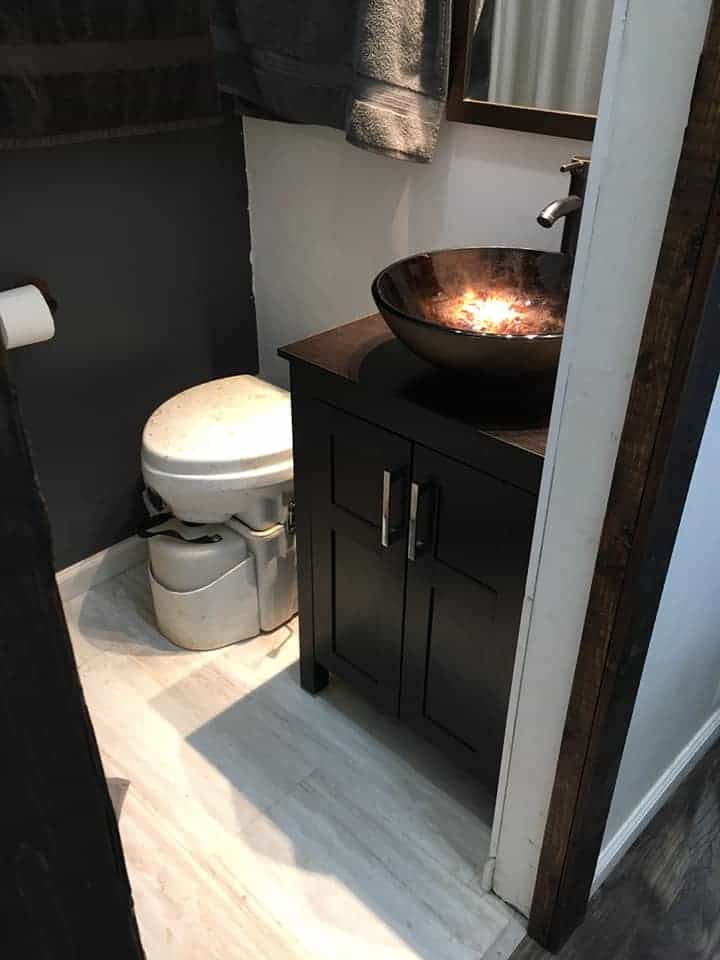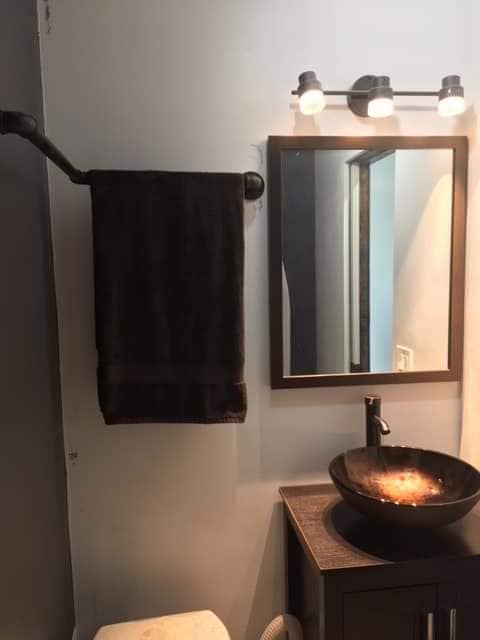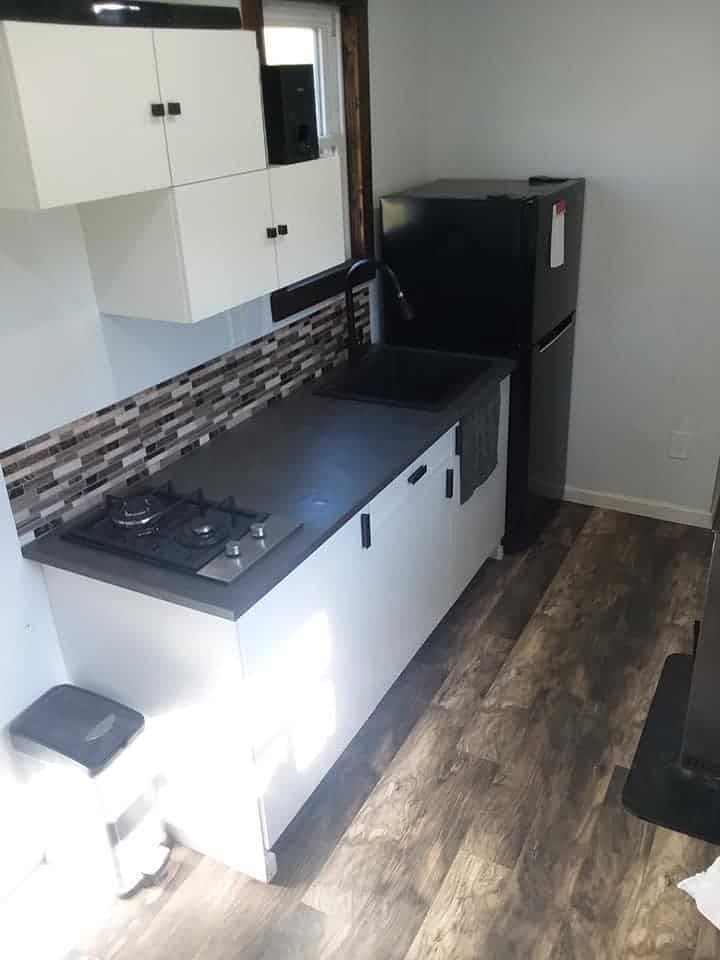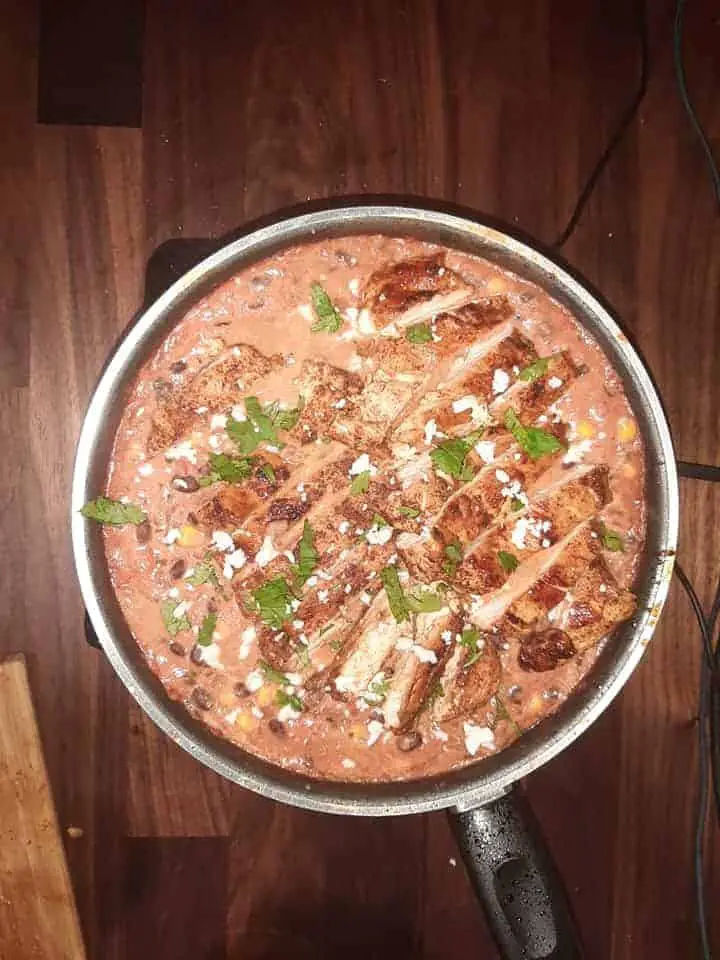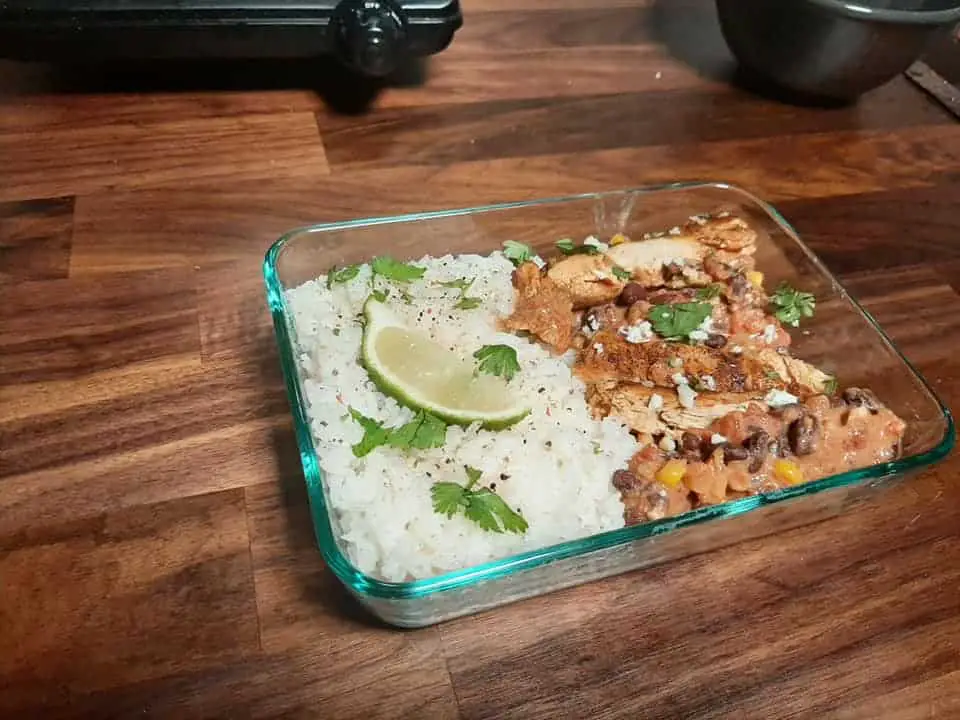This article has been reviewed in accordance with our editorial policy.
People often ask if living tiny really saves money. To be honest it completely depends on the person and their lifestyle. Living tiny is great option for the right people.
So, how much does it cost to live tiny? The cost of living tiny varies by each situation. On average it costs around $500 a month to rent a lot for a tiny house, however, many people have places they stay for free or buy land. And over half of tiny housers don’t have a mortgage, not to mention household bills are much cheaper. Moreover, there are lots of other ways tiny homes save money.
My husband and I have been living tiny for almost 4 years now and we love it! There are a lot of misconceptions out there about tiny houses and I have a passion to correct as much of that as possible. Here we will look more into the costs associated with living tiny.
Tiny House Mortgage
Let’s start with the most important cost of a home, buying one. Our first tiny house was built by my husband and we paid for a lot of it out of pocket. We did not have enough for everything and ended up financing. Our payment was under $500 a month (for much shorter than 30 years), so for a mortgage, that’s great!
Tiny houses are definitely smaller and therefore definitely cheaper, but not to the same extent that some people think. Tiny houses are much more expensive when looking at the cost per square foot, because you have to pack so much into such a small area.
Also, when people go tiny they tend to splurge on certain areas of their homes they would not have otherwise. Which is great when you can afford to have nicer materials. For example, in our first house, we bought real hardwood Brazilian Pecan floors. They were $5 a square foot, which would have been $10,000 to do all the floors in an average size house. But for our tiny house, it was only $1,000.
However, when you keep adding nicer materials to a tiny home the price rises fast, especially if you are having it built by a company. People get very disappointed when they request all of these beautiful makings and the price is over $150,000. Keep in mind that if they were building a full-size house with those same items, the price would skyrocket even more.
So yes, of course buying a tiny house is cheaper. But they can still add up. However, when you are looking at tiny house prices make sure you are comparing apples to apples. Don’t say, “Well I can buy a full-size house for $150,000, so why would I buy tiny?” when you are looking at completely different types of homes. The same full-sized home that had everything the tiny house did would be more than double in price.
With that being clear, you can get very affordable tiny homes with nice interiors for around $60,000, and own your own home. Specialized Tinys, LLC sells several different models that fall in that range before any expensive upgrades.
A mortgage for $60,000 will definitely be much cheaper than a mortgage for $150,000. Although, tiny houses can be harder to get financed, since they do not usually come with land, and thus the same real-estate securities.
There are still lots of ways to finance a tiny house if you cannot pay for it in full. One common way is manufacture financing. Lots of large tiny house companies offer their own financing, which is usually very affordable.
If that is not an option, there are other places that offer mortgages for tiny houses or RV loans. Lots of tiny houses are certified as RVs and then you can get financed as an RV. Find out more about how tiny houses are certified in this post I wrote.
Other options still include friends or family, personal loans, or credit cards. Although, I would not recommend all of those options.
For the most part, paying for your tiny house will be much cheaper than a regular mortgage. Keep in mind that most mortgages are for 30 years and almost none of those options will let you extend your loan for that long. Thus the payment could possibly still be similar, but it will take you much less time to pay it off.
Tiny House Lot Rent
The next major bill that tiny houses run into is lot rent. If you own your home this could be the biggest bill you have or one of the only ones.
We have lived in several states (Utah, Virginia, Washington, Oregon, and Nevada) and have looked into the costs of renting a place in most of them. There are a couple of options when it comes to finding somewhere to park.
Renting a Personal Lot
We did this for a few months before, and it can work out pretty well. If you find someone who has extra room and is looking to rent it out to a tiny houser to make a little money then it may work out for both parties. The price for this is relative. It completely depends on the owners and the location.
One of the downfalls is that there may not be many or any amenities. They often want to rent out to someone who is self-sufficient. But not always. Some people have nice setups with electricity and water.
Finding someone who has an area like this can be a little harder. Typically they will post information on social media or websites like tiny house parking and tiny house finder.
Be careful with renting from a person because they do not have the same concerns as a business. Be sure you have everything in a written contract and know that at any point they can decide they no longer want you there.
We have stayed on friends’ property before and we paid them a small amount in return. But we have also rented a lot from someone we didn’t know. Although the price was a little high to us, around $600, it was much cheaper than any other places we saw in that area.
Renting a Spot in an RV Park
Renting a place in an RV park can be much simpler. This is obviously a place of business, so you have fewer concerns about how they will handle your money or keep the contract. I know tiny housers who live full time in RV parks.
The main concern here is the quality of your home. Lots of RV Parks require some type of certification confirming your house is built to a set of standards, as to avoid any liability on their end.
Lots of tiny houses purchased from a company already receive a RIVA or RVIC certification. You can read more about this in my post here.
Be sure to call any RV parks you are interested in, before relying on them, to see what specific requirements they will have.
Renting a Spot in a Tiny House Community
Tiny house communities are one of the best places you can park your home. Not only are you surrounded by like-minded people, but you also have a secure location, less concern of potential crime like in some RV parks, and you have people around that can help you or give you advice.
The downfall here is that, typically, these are the most expensive places to live. Due to their appeal, they tend to be very pricy. But yet they almost always stay full, so they have no need to lower prices.
People are often willing to pay well for a place like this since they are saving so much on other bills they do not mind or exchange labor for rent. However, if money is a concern for you, this will probably not be your best option.
You can find different tiny house communities on social media or on websites like search tiny house villages.
Finding Somewhere Free
Of course who wouldn’t want somewhere free to stay? Well, it is possible but it may be hard to find. There are a few options for free places.
- Friends or Family
- Trade for Labor or Skills
- Open Land
Personally, we have done all three of these.
At one point we stayed in the backyard of my in-laws. It was convenient when we had just moved back to that state and we were still trying to find a good location. We have always had solar and we actually lowered their electricity bill by almost $100 a month by plugging into their house.
After that, we then moved onto land owned by a close friend of my husband’s. Our houses have always been self-sufficient so we did not worry about needing any amenities. They asked for $100 a month as a small rent.
Back when we first moved to Utah, we stayed in a sporting goods store’s parking lot that allowed overnight RVs. After talking to the store, they had no concerns about how long we stayed there. At that location, my husband met some other people and we found a good arrangement.
We stayed on some empty land in exchange for keeping people from shooting on the property. The owner of the land kept some old equipment there, and since it was so far out in the middle of nowhere, kids used to come and shoot at his stuff.
It actually ended up being a decent amount of work to keep people off of the land. But it was a great place at the time and we stayed for free. Although, it was an hour drive to work for both of us.
The last option is open land. This can mean a few different places. We have only stayed on BLM land. This can be a great simple option for tiny housers on the go. There are no hookups so you would need to be self-sustainable.
Most BLM places only allow you to stay for a maximum of 14 days, and then you need to move at least 30 miles away. Theoretically, if you had a few locations you could bounce around on BLM land alone. It is free to stay. But they will come and kick you off if you are there too long or they want to.
The Problems of Parking in a Tiny House
The problem with parking in a tiny house is that your house looks nice and unusual. We have pulled up on BLM land before where people have told us they have been there a long time. But within a week a ranger comes and talks to us about moving.
In Portland, OR there are LOTS of RVs and trailers that park in lots on the streets all over the place. And they were in the same place the entire time we were there (6 months). However, when we park a cop or someone always comes up and tells us we have to move or we will get tickets.
Without fail we will get kicked out of any open area even though there are SEVEN other trailers that have been there for months, if not years.
Why is this? Well to be honest the system is flawed. What are they going to do to someone who owns a junky trailer and has no job? They likely don’t care about tickets, won’t pay or even show up, and it is illegal to tow with a dog in the trailer. So they are almost completely left alone to stay where ever they please.
But what about us tax-paying citizens? We do care. We have lives and careers and they can make money off of us. So they tell us to move.
If you are looking for parking make sure it is LEGAL or you can get into a lot of trouble. Even if everyone else is doing it. If you own something nice they WILL single you out.
Tiny House Bills
What other bills come with living tiny? This answer varies a LOT depending on how your home it set up. So we will cover different scenarios.
On-Grid Tiny House
If you live in an on-grid tiny house then you are hooked up like a normal house. You pull electricity from a power pole, have a water hook up, and so on. In this situation, you will likely have the same types of bills that any regular house would have: electricity, water, trash, etc.
However, you have much less space to heat, a house valued at less therefore cheaper property taxes, and so on. You may have the same bills as a regular house but they will be a lot cheaper.
Also, most tiny houses are built with power-efficient lights, water-efficient fixtures, and more to keep your bills down. This means that even if you use the same amount of utilities in a tiny house, your bills will still likely be lower.
Off Grid Tiny House
Lots of tiny houses are built completely off-grid and they have hardly any bills. All of our tiny houses have run off of solar, so we have not had a power bill for years now. After the initial price of buying solar, you will not have to worry about a monthly bill.
There have been times when our battery bank wasn’t enough and we had to use our generator. In this case, we spend some money on fuel and therefore do have a small bill for power. Moreover, for the most part, we do not have to pay for power.
We also haul water, which is free for us. There are lots of places where you can find free water. However, lots of tiny houses have water delivered or dig a well. Having water delivered will give you a small water bill, usually annually. Getting a well has an initial cost, but typically no monthly bill after that.
You will still have other basic bills like internet and cable if you want those.
And basic bills like trash. If you are able to get a trash service then that would be a normal bill, but we take our trash to a dump. Depending on the place and amount, for us it was between $12-$40, this is less than once a month.
Off-grid tiny houses may have other monthly bills for propane or firewood. If you live somewhere you can get free wood, then with a little extra work, you can also eliminate this bill. However, most tiny houses use propane for something and need to refill it.
The bills that you will have vary so much depending on how your home is set up. So I will give you an example of our current house.
OUR OFF-GRID TINY HOUSE BILLS
- Propane (For our tankless water heater)- Averages out to $7 a month
- Diesel (For our forced air heater, check out different ways to heat a tiny house here.)- $28 a month through the coldest months.
- Internet (We use a mobile WiFi so I can take this anywhere I need it)- $27 a month
- Trash (We haul it)- $15 a month
- Personal property tax (Currently this is only on the land since we are still working on building another house)- $16.70
This averages out to $93.70 in the winter and $65.70 in the summer, including internet and property tax.
Supplemental Solar
Now it is worth noting that you can have supplemental solar to help reduce your bills, without actually living off-grid. The amount that this will lower your bills varies depending on the amount of solar you get, your location, the efficiency of the setup, and how much power you use.
When we moved from Utah to Virginia, we got way less power out of our same solar panels due to the location. We first stayed in my in-law’s yard and plugged our house into theirs. We used everything in our house as usual, and it still dropped their bill by about $100 a month.
Differences in Costs Compared to a Full-Size House
It is worth discussing the cost differences in daily life living tiny versus not. Of course, tiny houses save money by having less space to heat, having lower personal property taxes, less maintenance, and so on. But there are also significant differences in just the day to day life.
There is significant savings in purchasing items. Whether it’s having enough blankets for each bed, pots to fill your cupboard, or a new picture frame to hang, tiny house owners will always spend less.
People don’t quite understand the mental changes that arise when living tiny. To learn more about the mindset of a tiny houser, check out my other article.
I saw something on Facebook recently that said, “That mindset of ‘it’s only $5’ has probably cost me $10,000 by now.” And for many people, it is probably true. However, living in a tiny house changes your mindset. I almost never buy things and I don’t ever justify them by the price.
My tiny house has everything I need and I cannot fit every random thing I feel like buying, so I don’t buy it. Also, I don’t feel the need to buy anything extra because I appreciate the items I own, they bring value and meaning to my life, so why would I ruin that by buying useless items that will only clutter my space?
Even though this may not be as specific as the other bills, trust me, it will save you money living tiny in your daily purchases.
Let’s look at some more practical ways living tiny saves money.
When I clean my house, I will use way fewer products than the average-sized house. If you want to paint your entire living room and kitchen, one bucket of paint is fine. Anything you want to do in a tiny house will save you money, not to mention time!
Extra Costs of Living Tiny
There are lots of posts out there that say living tiny is a bad idea and will actually cost you more or the same. Personally, after living tiny for almost 4 years I have not experienced this, however, I would like to address it.
One significant difference is that a lot of things have changed since tiny living has really taken off. It is not nearly as difficult now to finance your home, get homeowners insurance, or live somewhere legally.
However, these things are definitely not as easy as they would be for a regular-sized home. Of course, everyone needs to do their research and be sure that they have a plan when it comes to building, location, and money.
With that being said, many of these posts are misleading. They make it seem so difficult and expensive to get a tiny house. This is just simply not the case. Many tiny houses can be very expensive as we discussed before. However, companies, like our own, Specialized Tinys, LLC, will build livable tiny houses for around $60,000. This of course is WAY cheaper than a full-size house.
There are so many different factors that go into savings with a tiny house that even the initial cost is only part.
I read one article bashing the tiny house movement by saying that we have no room and every time we want to have a family get together we have to go out and rent a room, leading to everything costing more. Frankly, I have never met a tiny houser who rented a room for a get-together, and I know we never have. But I do know lots of people who have regular homes that have.
Living tiny is a different mindset and it is not for everyone. If I wanted to host a Thanksgiving dinner every year, I would not have built a tiny house. We have never been the “throw a party” type of people. That’s not going to change now. Plus, we have had several people over to our home at a time, multiple times. Guess what? Everything has been fine. We usually just spend time outside and sit around a fire.
Living tiny is a different style of life, do not think we are trying to impress the Joneses.
Resale Value of Tiny Houses
Tiny house resale is not like real-estate resale. Now, if you are selling a house on property then yes you can make money. But if you are just selling a used tiny house, you will likely lose money.
Resale values are extremely hard to calculate for tiny houses because the “new” price varies so much by what you have in it and on top of that there is no record of what they are being resold for, unlike regular real estate.
Most people love the ability to customize their houses to be exactly what they want. Therefore, they will be less likely to want to buy used. Also, there will be more wear and tear on the house.
If you are building your own house, which I would only recommend if you are mechanically inclined or hire professional help, then you may be able to resell it and make a profit.
But essentially all tiny homes you buy you will lose money during resale. The customer can always go back and buy the same thing you bought from the original company. So your prices need to be lower.
I would not get a tiny house if you only plan to live it in for a year. However, if you will be staying in it for several years you can still save a lot of money and have something to sell afterward, unlike renting.
Without being able to establish real numbers, it is impossible to say how much you will lose in the resale value. This is another area to plan for when deciding on living tiny. I will honestly say that if you live tiny for several years it will be very difficult not to save money.
For us, over the past several years, I can definitely say that we have spent less than half of what a regular home and bills would have cost us. And the longer we stay tiny, the more that number will drop.


